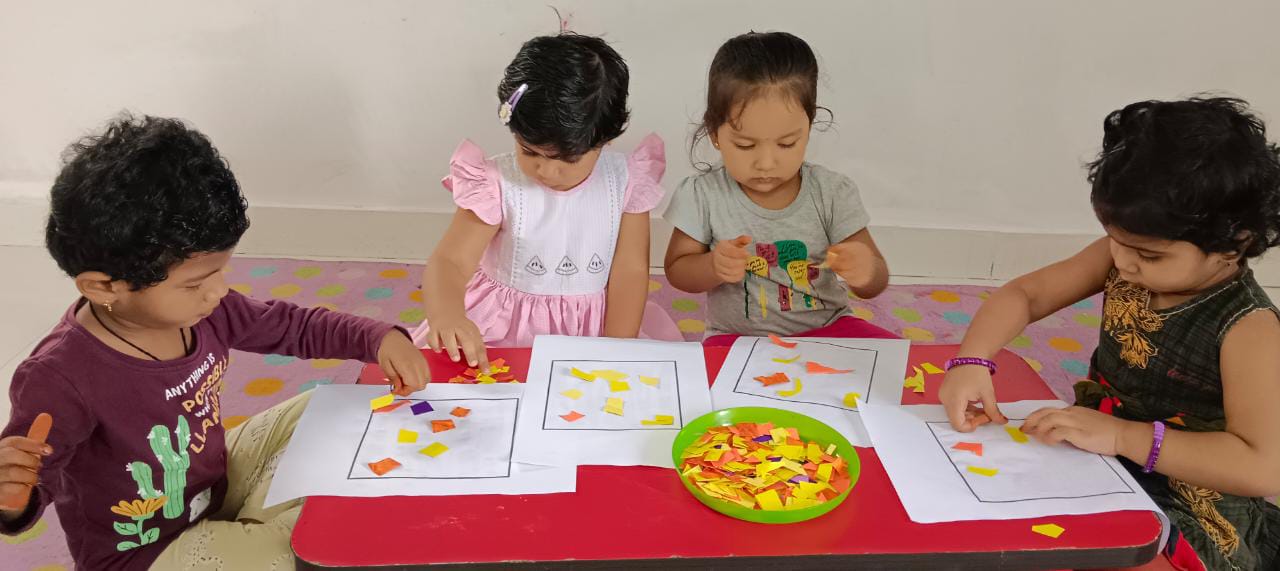Strategies for Creative Play in Early Childhood Education: Unlocking Endless Possibilities with Neldrac.
Incorporating creative play in children's learning can provide endless opportunities for discovery, improvisation, and imagination. Through role play and pretend play, kids can immerse themselves in their own imaginary worlds and take on any persona they desire. This type of play not only helps children think abstractly, but also fosters social and emotional learning. In this article, we'll explore different strategies and ideas for incorporating creative play into each individual Early Years Learning Framework (EYLF) outcome.

Learning Outcome 1 - Children Have Strong Sense of Identity
Engaging in creative play, where children can adopt different roles and act out their own stories, not only helps them develop their imagination but also their autonomy, interdependence, resilience, and sense of agency. To facilitate this process, educators can plan for sufficient time and space for children to play and imagine, such as allowing for extended periods of play over several days or weeks. They can also use moments in children's pretend play, such as when they're pretending to be a gardener or superhero, to acknowledge and understand that children construct meaning in various ways. Most importantly, educators should display excitement and encouragement for children's attempts to create roles and narratives so that they can develop a strong sense of identity. These practices can be incorporated into each individual EYLF outcome to enhance children's learning experiences.
Learning Outcome 2 - Children are Connected to and Contribute to Their World
In the world of imagination, children discover a treasure trove of social skills through creative play. They step into the shoes of different people, manipulate objects, and explore multiple perspectives. Whether playing house or running a post office, they learn to feel a sense of belonging to groups and communities and grasp the importance of reciprocal rights and responsibilities for active community participation. As educators, we can support their pretend play by modelling language that enables them to express their ideas, negotiate roles, and collaborate to achieve shared goals.
Moreover, creative play provides an avenue for children to connect with the environment around them. By providing access to a diverse range of natural materials such as stones, shells, flowers, dried leaves, twigs, art prints, fabric, and baskets, children can immerse themselves in a world of wonder. Whether pretending to be the sun or clouds, outdoor play can offer rich opportunities to discuss the interconnectedness of elements and beings in the universe. So let us encourage and support children's creative play as a powerful tool for learning, social development, and environmental consciousness.
Learning Outcome 3 - Children Have a Strong Sense of Wellbeing
Pretend play ignites the senses, encouraging children to move and groove with abandon. As they take on the role of firefighters, they climb up ladders and slide down chutes, or transform into airplanes and soar through imaginary clouds. Even a simple tea party can be an opportunity for building fine motor skills as children dress up their dolls and set out the table with nimble fingers. With the right environment and support, educators can take creative play to the next level by designing learning spaces that feature climbing frames and trim trails to help children develop physically and imaginatively. By planning for and supporting children to engage in energetic play such as dance, drama, movement, and games, educators can help children take ownership of their health and physical well-being, an essential component of this Learning Outcome. So, let's get moving and embrace the power of pretend play to stimulate both body and mind.
Learning Outcome 4 - Children are Confident and Involved Learners
Creative play is a world of wonder and imagination where children can explore and learn in ways that tickle their senses and spark their curiosity. Whether it's a muddy kitchen filled with squishy delights or a palette of paints, blocks, and paper that unleash their inner artist, providing materials that encourage creative expression is key to fostering a love of play. But creative play need not always be goal-oriented. It can also be a process that invites collaboration, inquiry, and improvisation. For example, turning lunchtime into a restaurant re-creation or building a tee-pee out of palm fronds and vines can be exciting ways to inspire children's creativity and problem-solving skills.
When children show an interest in nature as an example, educators can help them extend that interest to other contexts by creating a board game or drawing pictures, then using group work to collect information and establish rules. By supporting children's play in these ways, we help them transfer and adapt what they've learned from one context to another, meeting learning outcome elements such as "Children transfer and adapt what they have learned from one context to another." And when they take on the role of a doctor or a train engine, educators can use these moments to help children develop a sense of connection to the wider community and environment beyond the early childhood setting. So, let's embrace the power of creative play and unleash the magic of learning through imagination.
Learning Outcome 5 - Children are effective communicators
Unleashing creativity is a crucial aspect of this learning outcome, as evidenced by the key component "Children express ideas and make meaning using a range of media". Creative play provides a rich opportunity for children to explore their imaginations and bring their ideas to life through dramatic play, acting out stories, and assuming various roles. Music plays an integral role in this process, as it allows children to express themselves in a unique way and engage with language and sounds. Incorporating musical playground equipment into the learning environment can add an extra layer of fun and encourage children to explore music in a playful way.
As children engage in creative play, they also begin to understand how symbols and patterns work, a key element of this Learning Outcome. Educators can help support this development by discussing the elements, principles, skills, and techniques that children use to convey meaning through their play. These discussions can eventually lead to an exploration of more complex symbol systems, such as letters, numbers, time, money, and musical notation. By providing opportunities for creative expression, educators can help children develop important skills related to abstract thinking and understanding the world around them. Through imaginative play, music, and exploration of symbols and patterns, children can gain a deeper understanding of themselves and the world they inhabit.
Article by:

Find the Below Audio Podcast for this Blog
Listening Time: 8 Mins 17 Secs


